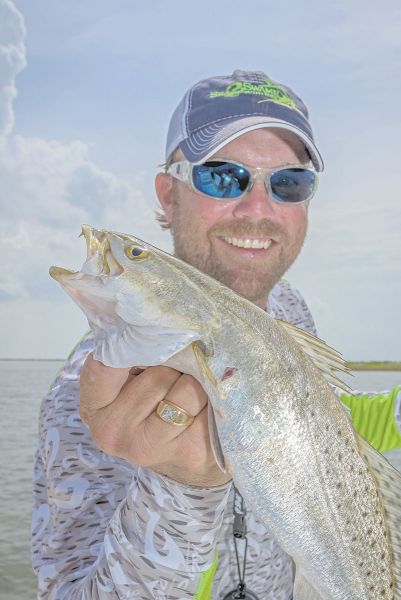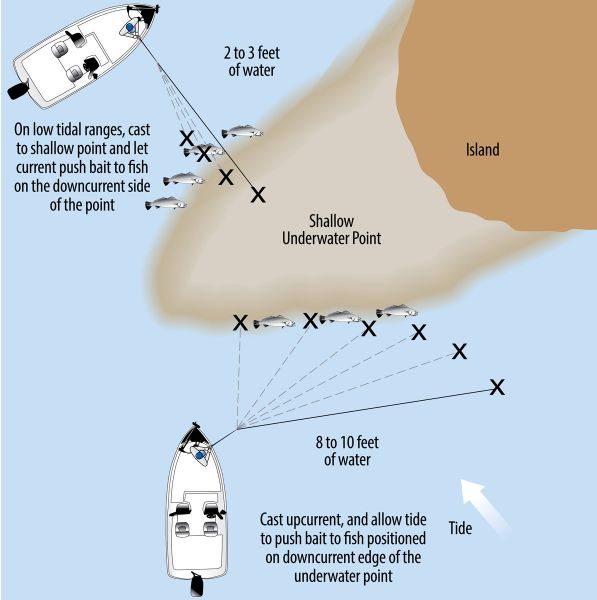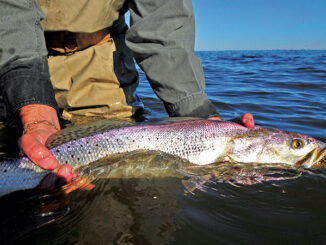
Mississippi’s Capt. Ronnie Daniels said effectively working a flat extending off an spit of marsh is about knowing how trout relate to the underwater structure.
“I find that a lot of times they’ll be on the upcurrent side,” Daniels said. “They can just group up in the eddy and eat, and not have to work so hard.”
He said often these flats will have a ledge on one side and taper off on the other side, and it’s that drop-off that sets up a the eddies that allow fish to conserve their energy.
 That’s not to say some fish won’t be on the downcurrent side of a flat — but they will only be there when the current is fairly slow because there is no eddy.
That’s not to say some fish won’t be on the downcurrent side of a flat — but they will only be there when the current is fairly slow because there is no eddy.
“If it’s a high tidal range, they can’t stay in that current,” Daniels said. “But when it’s a low tidal range, they can sit there and swim in that current and pick that bait off as it’s swept over the flat.”
 In either situation, the guide uses the current to position his bait properly. That means he will cast upcurrent and let the tide drag his lure to the fish.
In either situation, the guide uses the current to position his bait properly. That means he will cast upcurrent and let the tide drag his lure to the fish.


